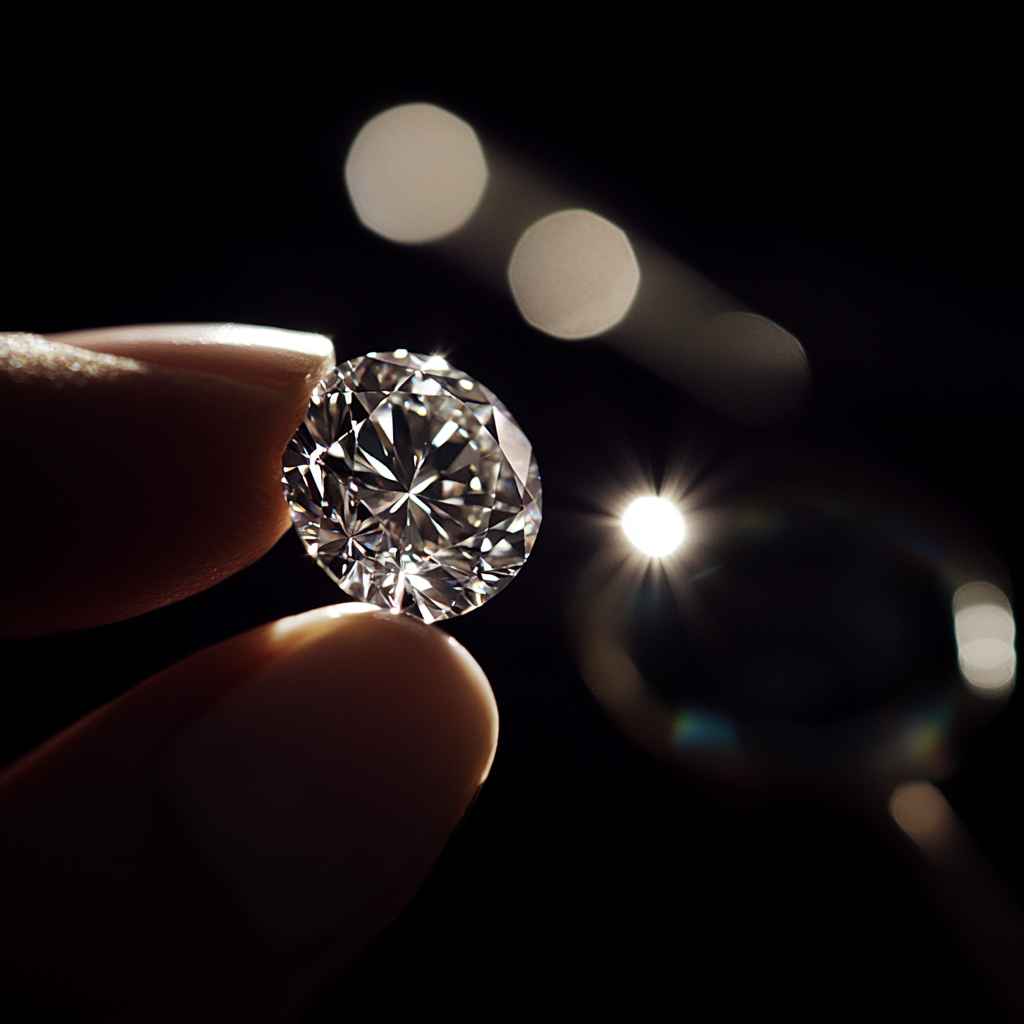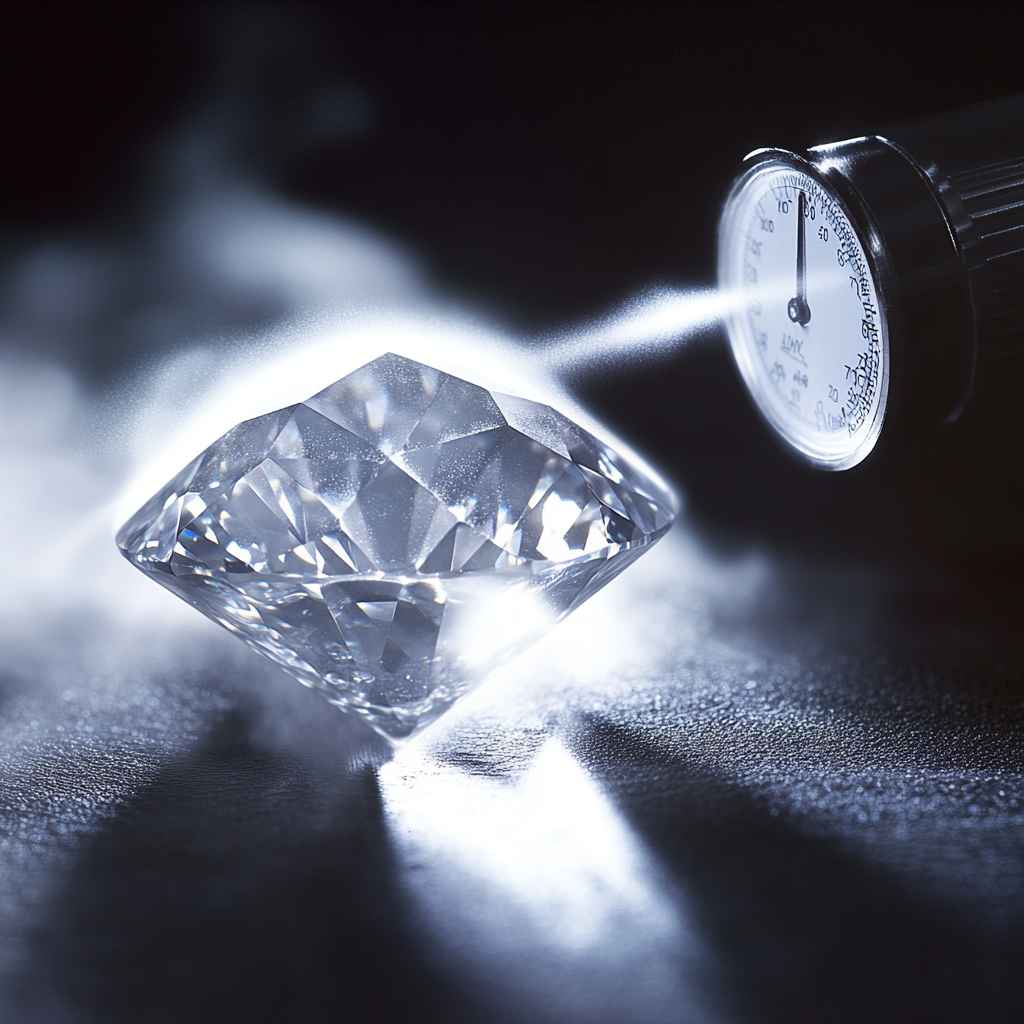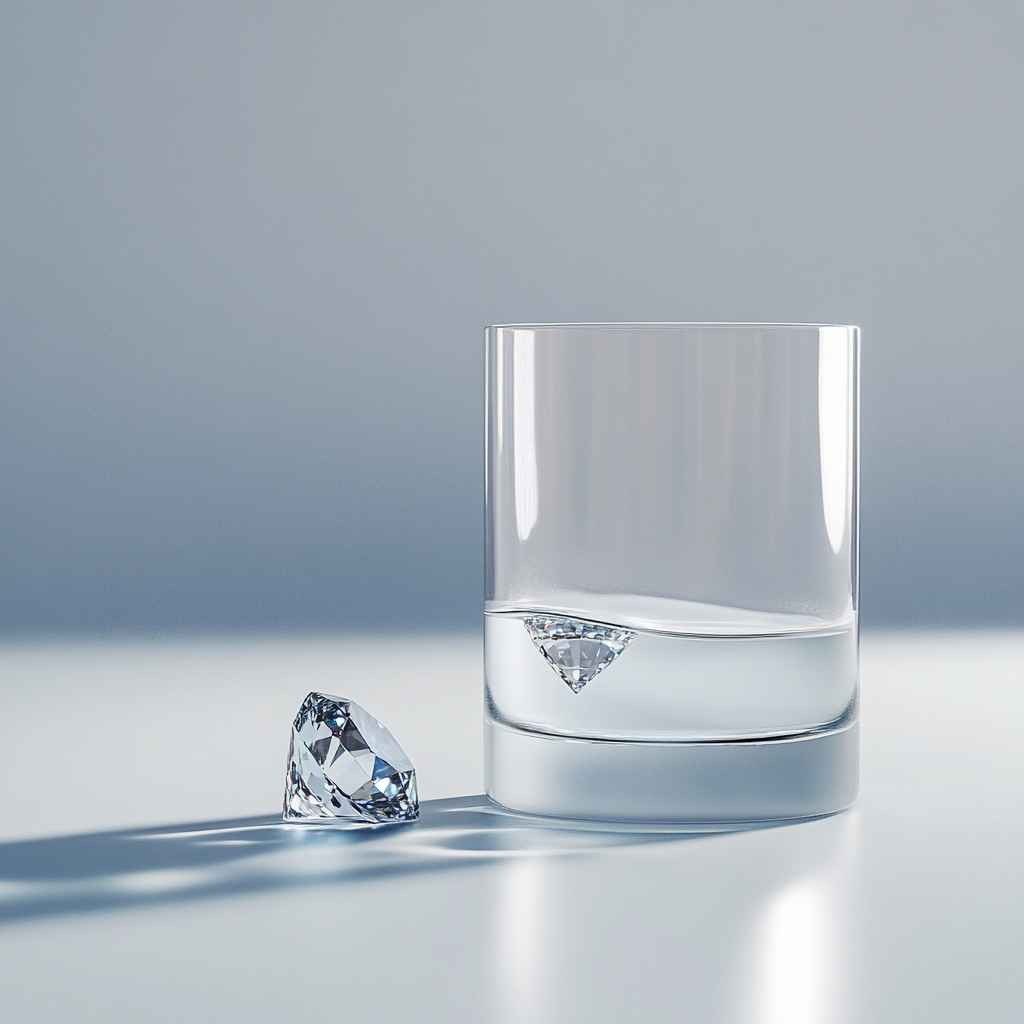Last weekend, my friend Rahim beamed with excitement. He had bought a beautiful diamond ring for his sister’s wedding.
“Do you think this is a real diamond?” he asked, his voice full of curiosity.
I smiled and said, “Let’s find out together!”
If you’ve ever wondered how to check if a diamond is genuine, you’re in the right place. Let’s explore simple ways to identify real diamonds—no fancy tools needed!

Why Does It Matter?
Before we dive in, here’s why knowing matters:
- Value for Money: Real diamonds are expensive and hold emotional significance.
- Avoid Scams: Protect yourself from fake or imitation gems.
- Peace of Mind: Feel confident about your purchase.
💡 Related Read: Not all jewelry is equal! Learn about imitation jewelry and its uses.
Simple Tests You Can Do at Home
1. The Water Test
What You Need: A glass of water.
How to Do It:
- Fill a glass with water.
- Drop the diamond into the glass.
Result:
- Real Diamond: Sinks straight to the bottom.
- Fake Diamond: Floats or sinks slowly.
💎 Diamonds are dense, which is why they sink!
2. The Fog Test

How to Do It:
- Hold the diamond between two fingers.
- Breathe on it to create fog.
Result:
- Real Diamond: Fog disappears almost instantly.
- Fake Diamond: Fog lingers for a few seconds.
Why? Diamonds disperse heat quickly, so fog won’t stay.
3. The Transparency Test
What You Need: A newspaper or paper with printed text.
How to Do It:
- Place the diamond flat side down on the text.
- Try reading the letters through it.
Result:
- Real Diamond: You can’t see the text clearly.
- Fake Diamond: The text remains visible.
💡 Diamonds bend light, making it hard to see through them.
4. The Sparkle Test
How to Do It:
- Hold the diamond under a bright light.
- Observe its sparkle and reflections.
Result:
- Real Diamond: Shines brilliantly, with white and rainbow sparkles.
- Fake Diamond: Dull with less brilliance.
✨ Pro Tip: For a better understanding of diamond quality, check out how to tell a good diamond.
Professional Methods for Accuracy
If home tests leave you unsure, consider professional options:
1. The Heat Test
Warning: This test can damage fake diamonds.
How to Do It:
- Heat the diamond for 30 seconds with a lighter.
- Drop it into cold water.
Result:
- Real Diamond: No damage—it can withstand extreme temperatures.
- Fake Diamond: May shatter due to rapid temperature changes.
2. Use a Diamond Tester
What Is It? A handheld device that checks thermal conductivity.
How to Do It:
- Place the tester’s tip on the diamond.
Result:
- Real Diamond: Tester indicates “positive.”
- Fake Diamond: No reaction or a different signal.
3. Professional Appraisal
Visit a trusted jeweler for:
- Expert Analysis: Tools like magnifiers and diamond testers.
- Certification: A GIA or IGI certificate confirming authenticity.
💡 Tip: Ask for a certificate when buying diamonds. Learn more about certified diamond rings.
Common Diamond Imitations
- Cubic Zirconia
- Looks similar but lacks brilliance.
- Scratches easily.
- Moissanite
- Very similar sparkle but has slightly different light patterns.
- Requires professional equipment to distinguish.
Fun Fact: Did you know diamonds are also pricier than gold? Explore why diamonds are more expensive.
Tips for Buying a Real Diamond
- Buy from Reputable Jewelers
- Ensure they have positive reviews and trusted credentials.
- Ask for Certification
- GIA or IGI certificates confirm quality and authenticity.
- Check the Return Policy
- Always verify the store’s return and exchange policies.
Rahim’s Story: The Happy Ending
After trying a few home tests, Rahim and I decided to visit a professional jeweler.
The jeweler carefully examined the ring and smiled.
“Congratulations! It’s a real diamond,” he said.
Rahim’s face lit up. “My sister will love this!”
We left the shop, happy and relieved.
Frequently Asked Questions
Q: Can I rely only on home tests?
A: Home tests are great for initial checks, but for certainty, consult a professional jeweler.
Q: Do real diamonds scratch glass?
A: Yes, but some fake stones can, too. This test isn’t always reliable.
Q: What’s a diamond certificate?
A: A document from GIA or IGI that proves the diamond’s quality and authenticity.
Final Thoughts
Spotting a real diamond doesn’t have to be complicated.
Key Takeaways:
- Start with simple home tests for a quick check.
- Understand their limitations—they’re not foolproof.
- For full confidence, visit a professional jeweler.
💡 Explore more insights about jewelry care and tips for buying rings at where to buy diamond rings.
Share Your Experience!
Have you ever tested a diamond at home? What was your experience?
Drop your thoughts or questions below—we’d love to hear from you!
As Rahim and I enjoyed a final cup of tea, he smiled. “Thanks for helping me!”
“Anytime!” I said, raising my cup. “Here’s to diamonds and happy sisters!”
